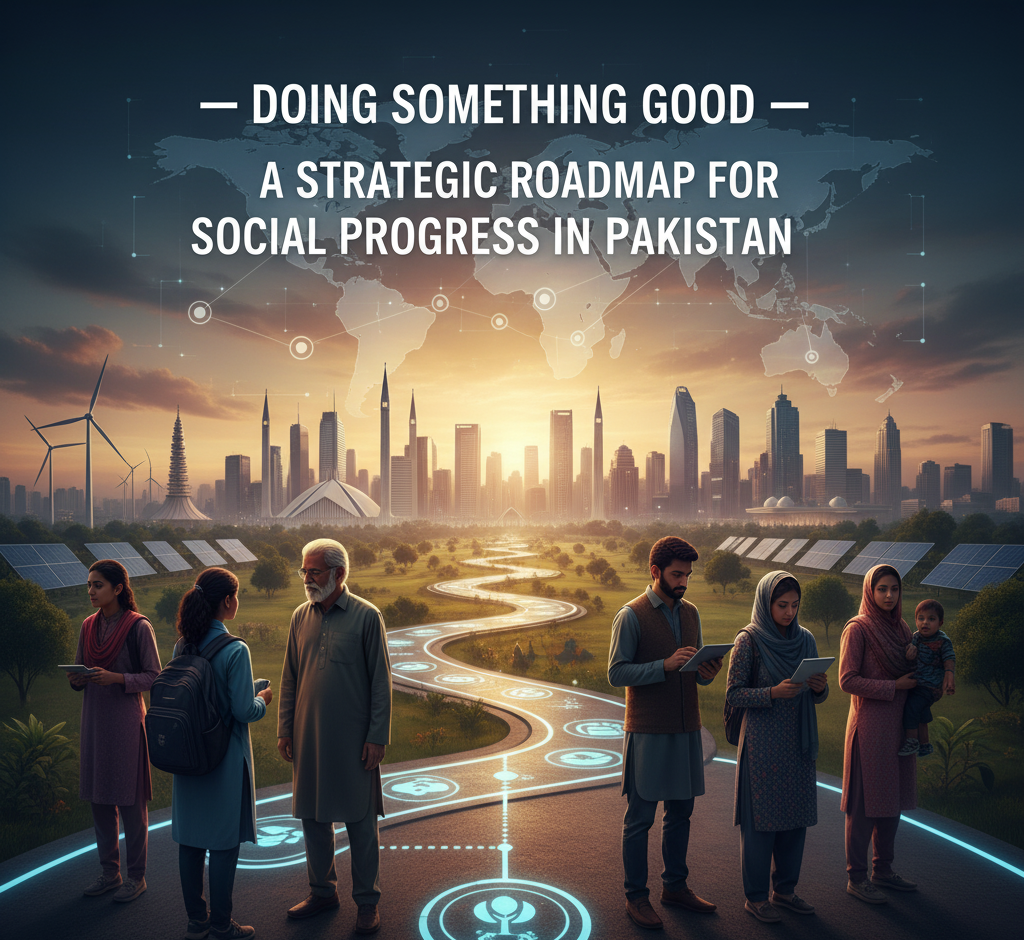Introduction: Why This Matters Now
Pakistan stands at a socio-economic crossroads. With 240+ million people, a youth bulge of 65% under 30, and an economy facing recurring IMF bailouts, the call for “doing something good” is not abstract — it is existential.
The Core Idea: From Rhetoric to Action
It stresses that intentions are meaningless unless translated into tangible reforms. His call echoes Amartya Sen’s Development as Freedom: societies progress not merely through GDP growth but through empowerment, equity, and capability building.
Key Facts & Figures: Pakistan’s Current State
- GDP (2025 est.): ~$375 billion (World Bank)
- Poverty rate: ~39% of population below poverty line (Asian Development Bank, 2024)
- Literacy rate: 62% (UNESCO, 2024)
- Health expenditure: 2.2% of GDP (WHO, 2023) vs. global average of 9.8%
- Corruption Perception Index 2024: Pakistan ranked 141/180 (Transparency International)
Strategic Areas to “Do Something Good”
1. Education as a National Security Issue
- Only 2.5% of GDP spent on education vs. UNESCO’s recommended 4–6%.
- Pakistan has 23 million out-of-school children, the second largest in the world.
- Investing in STEM and vocational skills could generate an additional $15–20 billion annually by 2035.
2. Climate Change Adaptation
- Pakistan is among the top 10 climate-vulnerable nations (Global Climate Risk Index).
- 2022 floods cost $30 billion in damages — more than the entire IMF bailout package.
- National strategy: shift to climate-resilient agriculture and invest in water infrastructure.
3. Governance & Anti-Corruption
- Corruption costs Pakistan an estimated US$17 billion annually (Pakistan Institute of Development Economics).
- Introducing digital governance platforms (like Estonia’s e-Gov model) could save 2–3% of GDP each year.
4. Health System Strengthening
- Only 0.9 physicians per 1,000 people (WHO, 2024).
- Malnutrition affects 40% of children under 5 (UNICEF).
- Expanding public health insurance and telemedicine can provide scalable solutions.
Lessons from Global Comparisons
- Bangladesh: Focused on female education + microfinance → GDP growth consistently >6% for two decades.
- Vietnam: Export-led manufacturing + education reform lifted 45 million out of poverty in 20 years.
- Estonia: Digitized governance reduced corruption drastically, boosting investor confidence.
Pakistan can adapt these lessons with contextual modifications.
Frequently Asked Questions (FAQ)
Q1: Why does Pakistan need urgent reforms now?
Because demographic pressures, climate shocks, and debt dependency are converging into a national security threat.
Q2: What is the most impactful first step?
Prioritize education spending and climate-resilient infrastructure, as they offer the highest ROI.
Q3: How does corruption block progress?
It diverts billions from development budgets, discourages FDI, and weakens public trust in government.
Conclusion: A Roadmap for Collective Action
The plea to “do something good” is a call for moral leadership and strategic vision. For Pakistan, this means:
Rebalancing budgets towards education and health
✔ Building climate-resilient infrastructure
✔ Digitizing governance to reduce corruption
✔ Empowering youth with skills for the global economy
The world does not wait. Pakistan must choose action — not rhetoric. Doing something good is no longer optional; it is survival.







